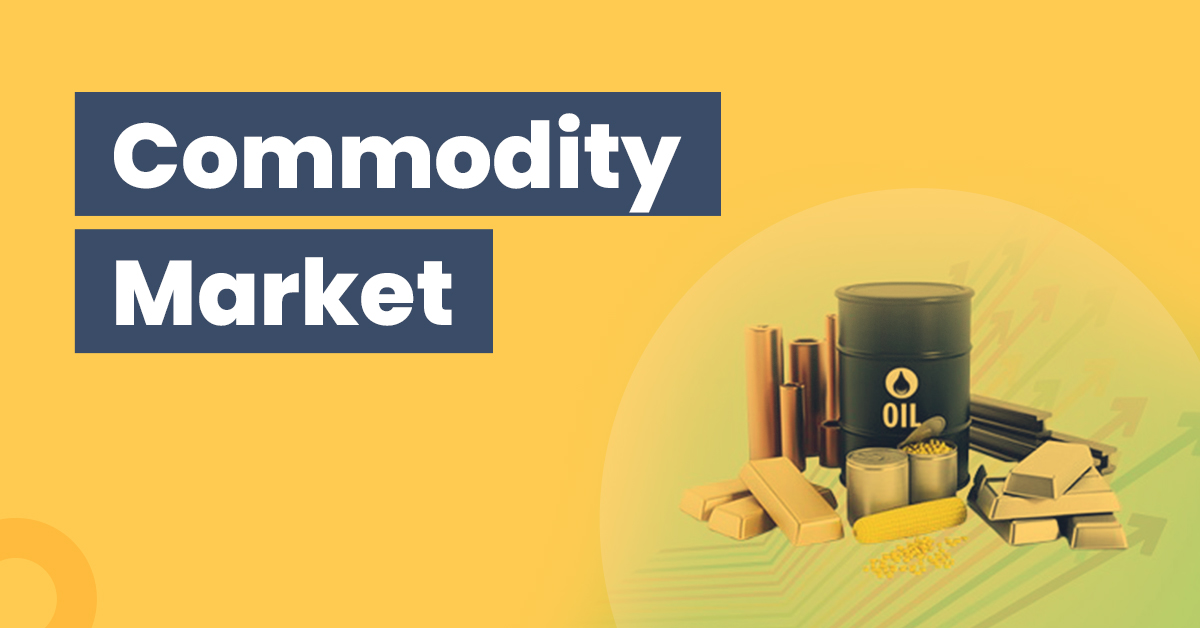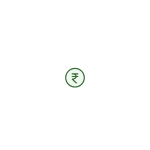What Is the Commodity Market?


In simple words, a commodity market is where traders buy and sell commodities. According to the Securities and Exchange Board of India (SEBI), a commodity is any tangible good that a trader can exchange for any other good of a similar type. A commodity market can also be a physical or virtual market where various participants meet to buy and sell positions on multiple commodities.
This blog will explore some basic details of a commodity market.
Types of Commodities Traded in India
Commodities can broadly be classified into hard and soft commodities. These are:
Hard Commodities
Generally, commodities that are mined or extracted from the earth’s interiors are known as hard commodities. Examples include metals and energy.
Soft Commodities
On the other hand, soft commodities are either grown or maintained. Agricultural products and livestock are examples of soft commodities.
The following are some of the most common types of commodities:
Metal Commodities
Iron, aluminium, copper, and nickel are essential commodities for manufacturing and construction. In addition, silver, platinum, and gold are used to create jewellery and also have industrial utility. These metals also play an important role in investment due to their perceived value.
Agricultural Commodities
Agricultural commodities such as crops and livestock are major sources of food for humans and animals. They play an essential role in the textile industry as well. These are generally perishable agricultural products such as chana, cotton, guar seed, maize, soybean, sugar, etc. Processed agricultural commodities like guar gum, palm oil, soybean oil, etc. are also considered as agricultural commodities.
Energy Commodities
This segment includes commodities that serve as major energy sources. These commodities are traded in both the unprocessed form in which they are extracted or in various refined forms or by-products of refining / processing. Crude oil,natural gas etc. are examples of energy commodities.
Environmental Commodities
These are a class of commodities that mainly comprises non-tangible energy credits. The value of these energy credits depends on the market participants’ demand for clean energy. Examples would include white certificates and renewable energy certificates.
Who Are the Participants of the Commodity Market?
Commodity market participants can be segregated into risk-givers and risk-takers. Risk-givers, also known as hedgers, are physically exposed to commodities. They take a buy or sell position on the stock exchange, aiming to pass on their risk.
Risk-takers are those market players who are not physically exposed to commodities but are willing to take buy or sell positions in the market to profit from the market.
The following is a list of market participants based on financial objectives:
Hedgers
These people aim to reduce risks caused by spot market fluctuations. The underlying concept of hedging is taking a position in the futures market equal and opposite to the position in the spot market. It reduces or eliminates risks from price volatility.
Hedgers mainly represent manufacturers, traders, farmers, Farmer Producer Organisation (FPOs) and other value chain participants.
Arbitrageurs
Arbitrageurs buy and sell in different markets simultaneously to earn risk-free profits from price discrepancies. For example, in the commodity markets, arbitrageurs put buy orders in the spot market and sell in the futures market. Their actions help to get rid of price inefficiencies in the commodity markets.
Investors/Traders
These include market speculators and traders who accept price risks willingly to profit from price changes. They anticipate the future price movement and take a position in the futures market with an intent to make a profit. Financial investors are represented by Traders including day traders, position traders, and market makers who are generally not having an offsetting position in the physical market.
Advantages of Commodity Trading
Listed below are the advantages of investing in the commodity market:
Hedge Against Inflation
Inflation adversely affects a company’s profit-making abilities as during an inflationary environment, interest rate increases and thereby increasing cost of borrowings for the company.. On the other hand, the cost of goods increases, thereby increasing the price of primary goods and raw materials (commodities). So commodity trading proves beneficial during inflation.
Historically, commodities have performed well during periods of high inflation. But, investors need to keep in mind that commodities are quite volatile.
Diversifies Your Investment Portfolio
Commodities contribute effectively to a diversified investment portfolio. It is essential as these assets share a low to negative correlation with stocks and bonds. Therefore, financial experts recommend investing in commodities simultaneously with stocks and bonds.
Investing in commodities enables investors to receive risk-adjusted returns and reduces the volatility of their overall portfolios.
Complete Transparency
The commodity market is under the purview of the regulator, the Securities and Exchange Board of India (SEBI). To facilitate transparency and eliminate any risk of manipulation, the market regulator has mandated the usage of modern electronic trading. It also promotes price discovery through broad-scale participation.
Safety against Market Disruptions
Disruptions in supply chains can occur due to unforeseen events and cause the price of certain commodities to soar. However, for those exposed to high risks from such events, such as exporters and wholesalers, the commodity market can provide safeguards against losses as they can hedge their exposures via futures or forwards.
Limitations of Commodity Market
Listed below are the limitations of the commodity market:
Burden of Leverage
High leverage facilities can help traders earn significant profits by paying a 5-10% margin and taking a considerable position. However, it is a double-edged sword as unexpected and volatile market movements can lead to significant losses.
Risks
Investments in commodities are not devoid of risks because various factors such as supply demand, geopolitical situations, currency movements, weather conditions, etc. play a crucial role in pricing. For example, political events in the Middle East can increase crude oil prices. Such systematic risks make commodity markets vulnerable to higher risk.
High volatility
The potential of higher returns from commodity trading results from the high price volatility of commodities. Demand and supply drive price movements, especially when they are inelastic. Moreover, due to participation from speculators, prices are subject to sudden changes.
Final Words
To sum up, the popularity of commodity markets is rising steadily in India as more and more people are learning about commodity trading and its benefits. People mostly use commodity futures and options to hedge against price volatility or to speculate upon it. However, commodity trading is not without risks and requires investors to be reasonably knowledgeable to avoid losses.
Frequently Asked Questions (FAQs)
What are commodity exchanges?
A commodity exchange is a marketplace for trading different commodities. Commodity trading usually takes place through futures contracts on commodities. Major commodity exchanges in India are National Multi Commodity Exchange India (NMCE), National Commodity and Derivative Exchange (NCDEX), Multi Commodity Exchange of India (MCX), Indian Commodity Exchange (ICEX), National Stock Exchange (NSE), Bombay Stock Exchange (BSE).
What is the difference between goods and commodities?
A commodity serves as a component for a finished item, but at every stage of manufacturing, value is added to the result. For instance, cotton yarn is a commodity. But, the final apparel we get after value addition is known as a good.
Who regulates the Indian commodity market?
The capital market watchdog SEBI has regulated the commodity derivatives market in India since 2015. Before that, the Forward Markets Commission (FMC) was responsible for regulating the commodity market in India.
What are the most popular commodities?
The most widely-traded commodities in the commodity market include crude oil, gold, silver, natural gas, coffee, wheat, cotton and sugar.
Which commodity is best for trading?
No such commodity can be segregated as the best commodity for trading. But, financial experts advise traders to focus on a commodity which is the most liquid. Bullion and base metal indices in India are traded often and aggressively. These indices help traders to diversify their portfolios and reduce their overall risks.




